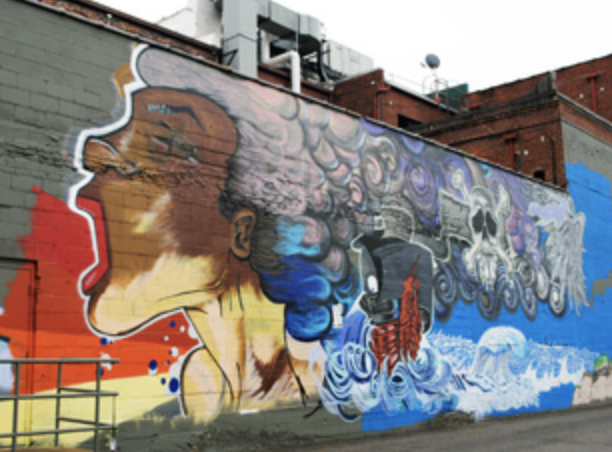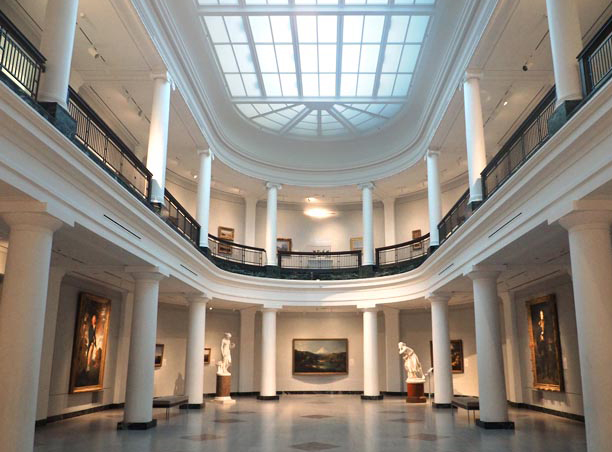Students Map Ann Arbor Art
CS students have partnered with the Ann Arbor Arts Alliance to develop an app for locating and exploring art in Ann Arbor.

 Enlarge
Enlarge
Every summer, the Ann Arbor Art Fairs draw artists and art aficionados from around the world to town. While this group descends upon and subsequently leaves town, still here after the crowds disperse is a vibrant and very visible art community in Ann Arbor.
Students in Dr. Jeff Ringenberg’s EECS 497, Major Design Projects senior capstone class in computer science are helping make that art easily accessible to everyone.
Through the help of the University of Michigan’s Business Engagement Center, the Ann Arbor Art Alliance (or A3) was able to meet with Ringenberg, who recruited a group of five computer science and engineering students who spent their semester developing 90% of a fully functional app to locate not only existing art in town, but offerings in a rotating art gallery the group is proposing.

 Enlarge
Enlarge
Diego Rojas Salvador was one of those students. Currently a Master’s student in CSE, Rojas Salvador says, “The key point was to develop a tool to allow anyone to explore the Ann Arbor art scene through our app. Art was the focus, but this project was very much about location and getting more connected. We focused on a map-based approach in which the user could map spaces where art could be found. The goal of the app was also to create a platform for bidding on and purchasing art displayed if it was for sale.”
The goal of A3 is to create visibility and opportunity for local artists and art lovers. Stephen Ranzini, whose day job is as President and COO of University Bank, organized a committee of like-minded and talented people to develop a plan in which key stakeholders could discover local artists and inject money into the art community of Ann Arbor.
This app is a by-product of their plan to create a rotating public art gallery, displaying the work of local artists who would be selected via juried competitions. Winners would get the opportunity for a four-month show all over Ann Arbor. The app would be central to the plan, and Ringenberg’s students delivered a nearly complete project.
Almost. The students, well, graduated. Ranzini has a very short list of work to be completed before a beta version of the app can be tested. From there, plans can continue and be built for A3 initiatives.

 Enlarge
Enlarge
From the student perspective, Rojas Salvador says, “This was a fascinating project to tackle. Some internships with large organizations don’t usually give you this scope and breadth of work on. This experience was great but still challenging because there was little administration oversight for the project. We were expected to come up with and research solutions to issues that arose. That gave us real world opportunities to learn and be very much in control of the project.”
Ranzini is excited about the state of things. He continues, “This project could have a very positive economic impact on the arts and business communities in Ann Arbor. Part of what makes this town such a great city is its art community. If we can do things to foster and build that community, that’s very important. That’s what we’re trying to do.”
Amy Klinke of the Business Engaement Center, who connects organizations to U-M for mutually beneficial partnerships, comments, “We work with organizations like the University Bank in a variety of capacities, and when Stephen reached out to look for resources to help with the A3 app, I had a few connections for him to pursue. Jeff Ringenberg’s students are exceptional, and I’m so glad this project worked for everyone. When we can connect students and community for the public good, everyone benefits.”

 MENU
MENU 
